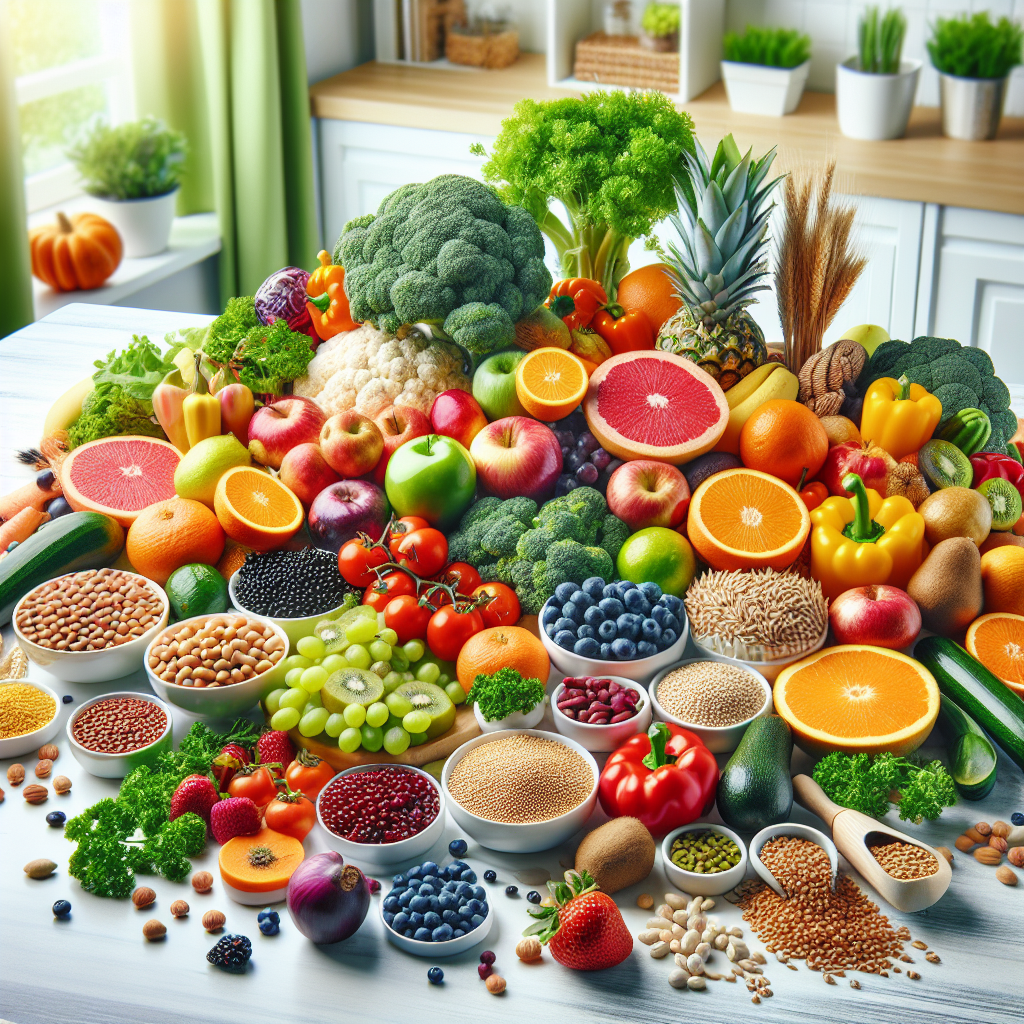This Is Exactly How Much Fiber You Need Daily To Prevent Chronic Disease
Published: June 2024 | By: Health & Wellness Today Editorial Team
Introduction: Why Fiber is the Unsung Hero of Health
In the quest for optimal health and disease prevention, dietary fiber stands out as a crucial yet often overlooked nutrient. According to a recent article on TODAY.com, getting the right amount of fiber daily is one of the most effective steps you can take to protect yourself from chronic diseases such as heart disease, diabetes, and certain cancers. But how much fiber do you actually need each day? And how can you ensure you’re meeting your needs, especially if you have food sensitivities or specific dietary preferences? This comprehensive guide, updated with the latest 2024-2025 research, will answer all your questions and show you how innovative tools like Food Scan Genius can help you reach your fiber goals with confidence.
How Much Fiber Do You Need Daily to Prevent Chronic Disease?
The current dietary guidelines from the U.S. Department of Health and Human Services and the USDA recommend the following daily fiber intake:
- Women under 50: 25 grams per day
- Men under 50: 38 grams per day
- Women 51 and older: 21 grams per day
- Men 51 and older: 30 grams per day
However, recent research and expert consensus highlighted by TODAY.com emphasize that most Americans fall far short of these targets, with average intake hovering around just 15 grams per day.
Why Is Fiber So Important for Preventing Chronic Disease?
Fiber is a type of carbohydrate that the body cannot digest. It passes through the digestive system, supporting gut health, stabilizing blood sugar, and lowering cholesterol. According to a 2024 JAMA review, higher fiber intake is associated with a significant reduction in the risk of:
- Heart disease
- Type 2 diabetes
- Colorectal cancer
- Obesity
- Stroke
The mechanisms include improved gut microbiome diversity, better weight management, and reduced inflammation. Soluble fiber, found in oats, beans, and some fruits, helps lower cholesterol and control blood sugar. Insoluble fiber, abundant in whole grains and vegetables, promotes regular bowel movements and digestive health.
Latest Research: Fiber and Chronic Disease Prevention in 2024-2025
A 2024 meta-analysis in Nutrients found that people who consistently met or exceeded the recommended daily fiber intake had up to a 30% lower risk of developing heart disease and a 25% lower risk of type 2 diabetes. The study also noted that fiber’s benefits are dose-dependent—the more you eat (within recommended limits), the greater the protection.
Another 2024 clinical trial highlighted the role of fiber in supporting a healthy gut microbiome, which in turn influences immune function and inflammation—key factors in chronic disease prevention.
Special Considerations: Fiber for People with Food Sensitivities and Dietary Preferences
Meeting your daily fiber needs can be challenging if you have food allergies, intolerances (like gluten or FODMAPs), or follow specific diets (vegan, vegetarian, paleo, keto). Here’s how you can optimize fiber intake for your unique needs:
1. Gluten-Free Diets
Many high-fiber foods, such as whole wheat and barley, contain gluten. However, gluten-free sources like quinoa, brown rice, chia seeds, flaxseeds, lentils, and most fruits and vegetables are excellent alternatives.
2. Low-FODMAP Diets
For those with IBS or sensitive digestion, low-FODMAP fiber sources include oats, strawberries, carrots, and potatoes. Avoid high-FODMAP foods like certain beans and wheat-based products.
3. Vegan and Vegetarian Diets
Plant-based diets are naturally rich in fiber, but variety is key. Rotate legumes, whole grains, nuts, seeds, fruits, and vegetables to maximize both soluble and insoluble fiber intake.
4. Keto and Low-Carb Diets
While these diets restrict many high-fiber foods, you can still get fiber from non-starchy vegetables (broccoli, spinach, cauliflower), chia seeds, and flaxseeds.
5. Food Allergies
If you’re allergic to nuts, seeds, or legumes, focus on fiber-rich vegetables, fruits, and grains that are safe for you. Always check labels for cross-contamination.
How to Easily Track and Boost Your Fiber Intake
Knowing how much fiber you’re actually eating can be tricky, especially with food sensitivities or complex dietary needs. This is where Food Scan Genius comes in—a revolutionary app designed to help you scan, track, and optimize your fiber intake based on your unique profile.
- Scan Barcodes: Instantly see the fiber content of packaged foods.
- Personalized Recommendations: Get daily fiber goals tailored to your age, gender, and dietary restrictions.
- Allergen Alerts: Avoid foods that trigger sensitivities while still meeting your fiber needs.
- Meal Planning: Build high-fiber meal plans with foods you love and can safely enjoy.
Food Scan Genius is especially helpful for people with food allergies, intolerances, or those following specialized diets. By making fiber tracking simple and personalized, it empowers you to take control of your health.
Top 20 High-Fiber Foods for Every Dietary Preference
Whether you’re vegan, gluten-free, or following a low-FODMAP plan, there are plenty of delicious, fiber-rich options:
- Lentils (15.6g per cup, cooked)
- Chia seeds (10g per ounce)
- Black beans (15g per cup, cooked)
- Chickpeas (12.5g per cup, cooked)
- Quinoa (5g per cup, cooked)
- Avocado (10g per fruit)
- Raspberries (8g per cup)
- Pears (5.5g per medium fruit)
- Oats (4g per cup, cooked)
- Broccoli (5g per cup, cooked)
- Sweet potatoes (4g per medium potato)
- Almonds (3.5g per ounce)
- Flaxseeds (3g per tablespoon)
- Brown rice (3.5g per cup, cooked)
- Carrots (3.5g per cup, raw)
- Apples (4.5g per medium fruit)
- Green peas (9g per cup, cooked)
- Artichokes (10g per medium artichoke)
- Popcorn (3.5g per 3 cups, air-popped)
- Brussels sprouts (4g per cup, cooked)
Rotate these foods into your meals to easily meet your daily fiber target, regardless of your dietary needs.
Tips for Increasing Fiber Intake Safely and Comfortably
- Increase gradually: Sudden increases can cause bloating or discomfort. Add 2-3 grams per day until you reach your goal.
- Drink plenty of water: Fiber works best with adequate hydration.
- Choose whole foods: Whole grains, fruits, and vegetables are better than processed foods for fiber content.
- Read labels: Use tools like Food Scan Genius to check fiber content and allergen information.
- Mix fiber sources: Combine soluble and insoluble fiber for maximum benefit.
FAQ: Your Top Fiber Questions Answered
1. Can I get enough fiber on a gluten-free or low-carb diet?
Yes! Focus on naturally gluten-free, high-fiber foods like quinoa, chia seeds, vegetables, and certain fruits. Low-carb diets can include non-starchy, high-fiber veggies and seeds.
2. What are signs I’m not getting enough fiber?
Common signs include constipation, irregular bowel movements, high cholesterol, and feeling hungry soon after eating.
3. Can fiber supplements replace whole foods?
Supplements can help, but whole foods provide additional nutrients and phytochemicals that support overall health.
4. How can I track my fiber intake easily?
Apps like Food Scan Genius make it easy to scan, log, and track your fiber intake, tailored to your sensitivities and preferences.
Conclusion: Make Fiber Your Daily Health Habit
Getting the right amount of fiber every day is one of the simplest and most effective ways to prevent chronic disease, support gut health, and feel your best. Whether you have food sensitivities, follow a special diet, or just want to improve your nutrition, there are plenty of delicious, safe, and easy ways to meet your fiber needs.
Use the latest research, practical tips, and innovative tools like Food Scan Genius to take the guesswork out of fiber tracking. Start today, and make fiber your daily health habit for a longer, healthier life.





